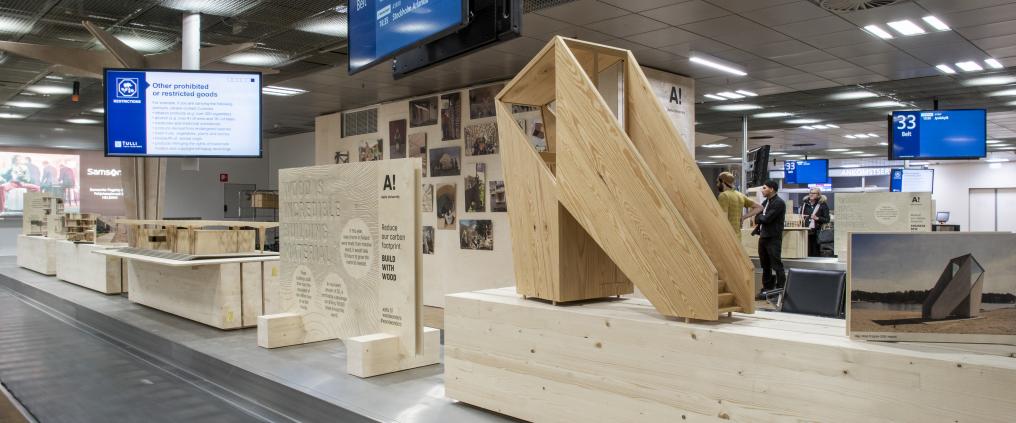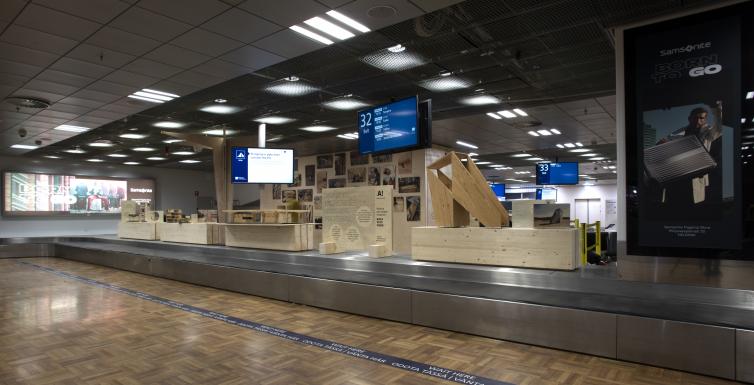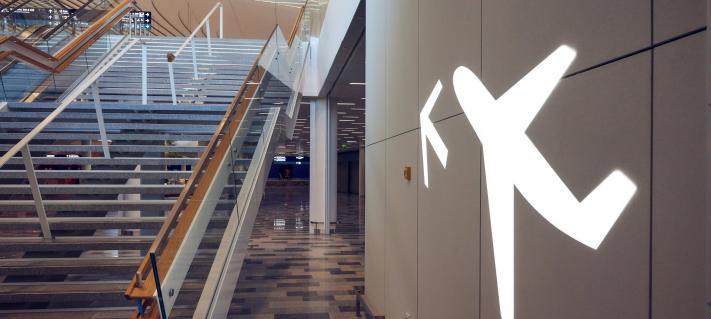The new art exhibition, Wood Wonders, is located at the 2B Baggage claim hall.
At the heart of the exhibition are new discoveries in the structural properties of wood, which can be used to improve its rigidity. These developments mean that wood can be used more and more as a fundamental building material and can help to mitigate the use of environmentally harmful materials such as plastic.
The exhibition, opening today, consists of five “belts” – installed around conveyor belts in the hall – each highlighting a different wonder of wood:
Belt 1 – Wood sequesters carbon
Belt 2 – Wood is an incredible building material
Belt 3 – Wood feels good
Belt 4 – Wood has superpowers
Belt 5 – Wood can live forever
A display of Finland
The exhibition also includes an introductory section where you can find photos and information about working, studying and projects at Aalto University. This section is the result of a long partnership and collaboration between Finavia and Aalto University.
Exhibitions at the airports are a part of crafting Finavia’s customer experience. One of the core goals of Finavia’s customer experience is to offer the Finnish experience to airport passengers, and this new exhibition plays an important role in that.Wooden details and interior solutions are also displayed in other areas of the Helsinki Airport, such as in the wood-themed east wing.
A greener material
As a taste of what to expect at the exhibition, let’s take a look at the subject of Belt 2 – wood as an incredible building material.
In the latest global status report, the World Green Building Council reported that “buildings and construction together account for 36% of global final energy use and 39% of energy-related carbon dioxide (CO2) emissions when upstream power generation is included.”
As the construction industry accounts for such a large share of energy use and CO2 emissions, the materials and techniques used can make huge differences to the future of the planet. The past 50 years have seen concrete as the dominant construction material, owing to its strength. With the latest chemical modifications to wood, however, it is once again a prime candidate.
Wood can also store carbon dioxide. This property means that designers can incorporate this process into the design phase of construction projects and minimise their carbon footprints.
According to Aalto University’s research, if every home in Finland were made from wood, it would take 10 hours to grow the material needed to build all residential structures this year, and those buildings would store the equivalent of 950 000 tons of CO2 – the equivalent amount emitted by a passenger car driving 300 times around the world.
Finland as a pioneer
Finland is an ideal location for Wood Wonders. Aside from saunas, Finland is known for being a pioneer in innovative use of wood in construction, one recent example being Oodi Library in Helsinki. The same internationally recognised designer group, ALA Architects, is also behind Helsinki Airport’s upcoming iconic entrance and its wooden roof.
Investment in wood architecture has begun to rise, but more needs to be done to publicise its benefits and uses. Wood Wonders seeks to do exactly that.
Wood Wonders will be on display until the beginning of 2021 and has been supported by the Finnish Ministry of the Environment.




